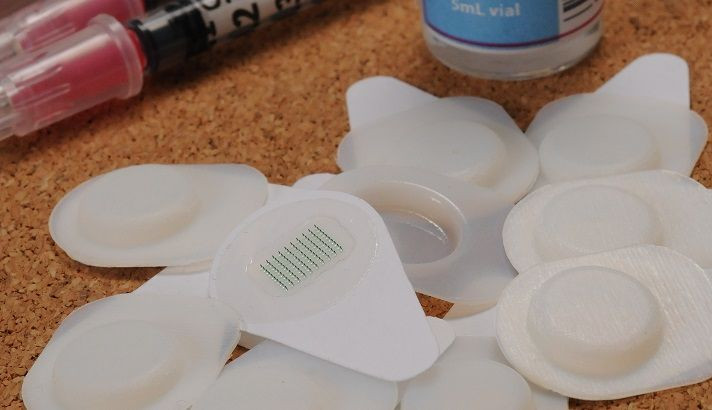Hate Getting The Flu Shot? Self-Administered Vaccine Patch May Eliminate Need For Needles

Whether you’re squeamish at the sight of needles or think scheduling a doctor’s visit just to have a nurse jab your arm with a needle is a waste of time, getting your annual flu shot is never an experience to look forward to. And it may never be, but a new study from Georgia Institute of Technology suggests the way it’s delivered could make it a higher priority.
Direct injection is fast, but it’s also painful. It’s also not the only way to deliver medicine. Another way is topically through the skin, prompting GIT researchers to develop a self-administered patch that sits on the surface of a patient’s skin and delivers the vaccine through 50 microscopic needles, each as tall as the width of a human hair. The patch is virtually pain-free, and has been shown to up vaccination rates substantially.
Mark Prausnitz, a GIT professor in the School of Chemical and Biomolecular Engineering, said that his team’s ultimate goal is to produce a line of vaccine patches that consumers can pick up at their local pharmacy or have sent to them by mail. "People could take them home and apply them to the whole family,” Prausnitz said in a statement. “We want to get more people vaccinated, and we want to relieve health care professionals from the burden of giving these millions of vaccinations."
The study is believed to be the first to critically look at the competing efficacy of microneedle patches versus traditional intramuscular injections. While admittedly early in the process — the study only sought to learn whether patients had difficulty applying the patch, not whether it could safely deliver the vaccine — researchers are confident their findings motivate taking the next step.
Ninety-one subjects in the metropolitan Atlanta area were recruited to test the vaccine patch on themselves, none of whom had ever used a microneedle patch before. Each received instructions on how to properly apply the patch, applying three themselves and the fourth by a research member. Rather than receive medicine, both the patch group and the traditional injection group received a saline solution.
Researchers then evaluated the effectiveness of the self-application using colored dye to indicate where the needles had punctured the skin. Though not everyone got the hang of it on the first try, all subjects eventually applied the patch successfully, Prausnitz said. Further, effectiveness increased once the patches made a clicking noise to alert it had been fully applied. Overall, people said the patch was likely to compel them to get a flu vaccine more often, up from 46 percent of the time to 65 percent.
"If this holds for the population as a whole, that would have a tremendous impact on preventing disease and the cost associated with both influenza and the vaccination process," remarked Paula Frew, an assistant professor in the Emory University School of Medicine and a co-author of the study. When test subjects rated the relative pain of both methods on a scale of 1 to 100, traditional injection received a score of 15. Meanwhile, the self-administered patch merited only a 1.5.
If all goes to plan, the team hopes manufacturing can begin within five years. In the meantime, they plan on testing the patch for its ability to deliver the actual vaccine, the safety in doing so, and the sustained ability for consumers to apply it correctly. Prausnitz and his team are shooting for spring 2015 to begin their Phase 1 clinical trials.
Source: Norman J, Arya J, McClain M. et al. Microneedle patches: Usability and acceptability for self-vaccination against influenza. Vaccine. 2014.
Published by Medicaldaily.com



























